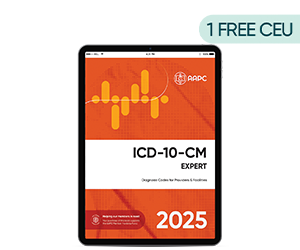
If you’re still wondering if healthcare organizations are looking to invest in artificial intelligence (AI) — the survey says, “Yes!”
On March 4, 2025, Waystar announced the findings of its Qualtrics market survey. The survey aimed to pinpoint the top revenue cycle management (RCM) trends of 2025. The company gauged the opinions of 600 participants from healthcare RCM, finance, and technology.
Healthcare leaders are interested in ways to improve their revenue stability, and by making investments in software, forging strategic partnerships, and making necessary adjustments, they’ll help boost the financial performance of their organizations.
Learn what AI trends healthcare leaders are looking for this year in RCM.
Trend 1: Use AI to Make RCM More Efficient
AI is a swiftly evolving technology, and it’s already been shown to meet healthcare’s demands. When RCM enters the conversation, implementing AI and automation can improve accuracy of claims, streamline workflows, and help enhance an organization’s financial performance.
According to the Waystar survey, 92 percent of respondents stated their top priority is to make an investment in AI or automation in 2025. According to the survey, respondents plan to “invest in or further implement AI, generative AI, and automation” for RCM.
“Healthcare leaders are clear on their investment priorities for 2025: AI and advanced automation are critical to improving efficiency, accuracy, and security,” said Matt Hawkins, chief executive officer of Waystar in a press release.
Trend 2: Look For ROI When Shopping for RCM Software
Any healthcare organization, be it a small family practice or a large hospital group, needs the money brought in from the investment to outperform the cost of the venture, or the organization will lose money on the software.
Nearly all (96 percent) of the survey respondents stated that it is important for the RCM to deliver a strong return on investment (ROI). At the same time, 96 percent of respondents would be drawn toward investing in a new RCM solution if it “guarantees a smooth, easy, and fast implementation.” Organizations do not want to make the investment if the new RCM software will make life difficult for staff.
Trend 3: Don’t Count Out Cybersecurity
An interesting note was that only 93 percent of respondents wanted a strong focus on data security in an RCM software solution. This piece of information was found in the previously discussed trend, but factors into the third trend.
2024 saw the largest cybersecurity breach to date with the Change Healthcare ransomware attack. An estimated 184 million people had their protected health information (PHI) compromised in the event, and countless healthcare organizations saw their revenue flow stop in an instant.
In Waystar’s survey, respondents indicated they’re looking for an RCM solution that can protect their patient and organization data against cybersecurity breaches. Data security was the top factor as to why healthcare leaders would switch RCM vendors, and it was the third most popular factor when assessing new revenue cycle software.
Trend 4: Evaluate End-to-End Platforms
Multiple individual software tools to handle different revenue cycle components used to work in healthcare, but the practice has had its issues over the years. For example, moving claims or data between the different tools can lead to inefficiencies and possible roadblocks if a software is out of order for maintenance. Not to mention, your staff run the risk of duplicating records, making mistakes, or introducing inconsistencies in the data when the information runs through point-to-point software solutions.
In 2025, survey respondents are seeking to make the move toward end-to-end platforms. More than 70 percent of respondents admitted to using one to two partners for RCM. This condensed revenue cycle solution can lead to more:
- Streamlined workflows
- Consolidated functionality
- Improved performance through AI and automation
The end-to-end platforms also ensure accurate and consistent data, reduced operating costs, lower denial rates, better security, faster reimbursement timelines, and more.
Trend 5: Prioritize Patient Access to Prevent Denials
RCM experts have stated for years that if information is correct from the start, you’ll receive fewer denials. In 2025, healthcare organizations want to provide better patient access to help reduce front-end errors. The errors could relate to prior authorization, patient registration, or insurance eligibility.
AI and automation investments can also assist in these error reductions by alerting the patient to missed fields, incorrect entries, and discrepancies that the patient can correct.
Trend 6: Eliminate Errors to Improve Cash Flow
No matter how experienced your revenue cycle team is, they may still face speedbumps, such as medical coding, guidelines, payer rules, and everyday interruptions that can disrupt their efficiency of moving through the RCM workflow. Avoiding errors in medical claims is one of the biggest challenges to boosting your organization’s cash flow.
Respondents want to invest in AI and automation to streamline claim management and help reduce or stop denials. Payers change policies and reimbursement models frequently, and survey respondents indicated that adding automation to your RCM is needed to improve financial performance, remain compliant, and enhance your team’s efficiency.







